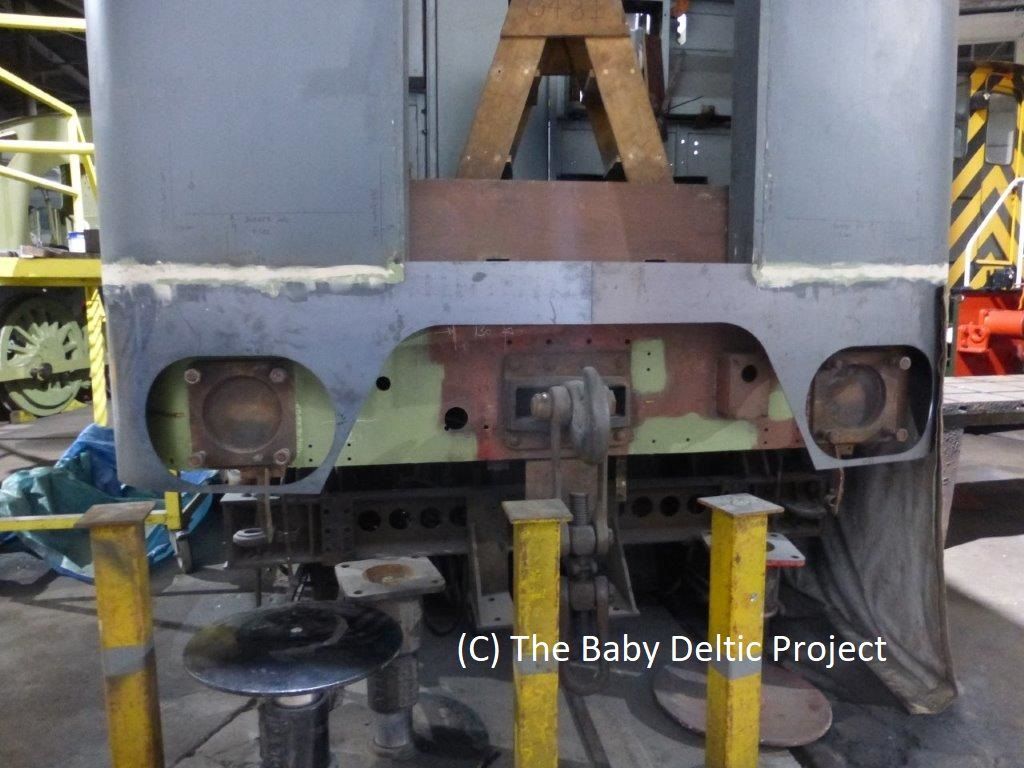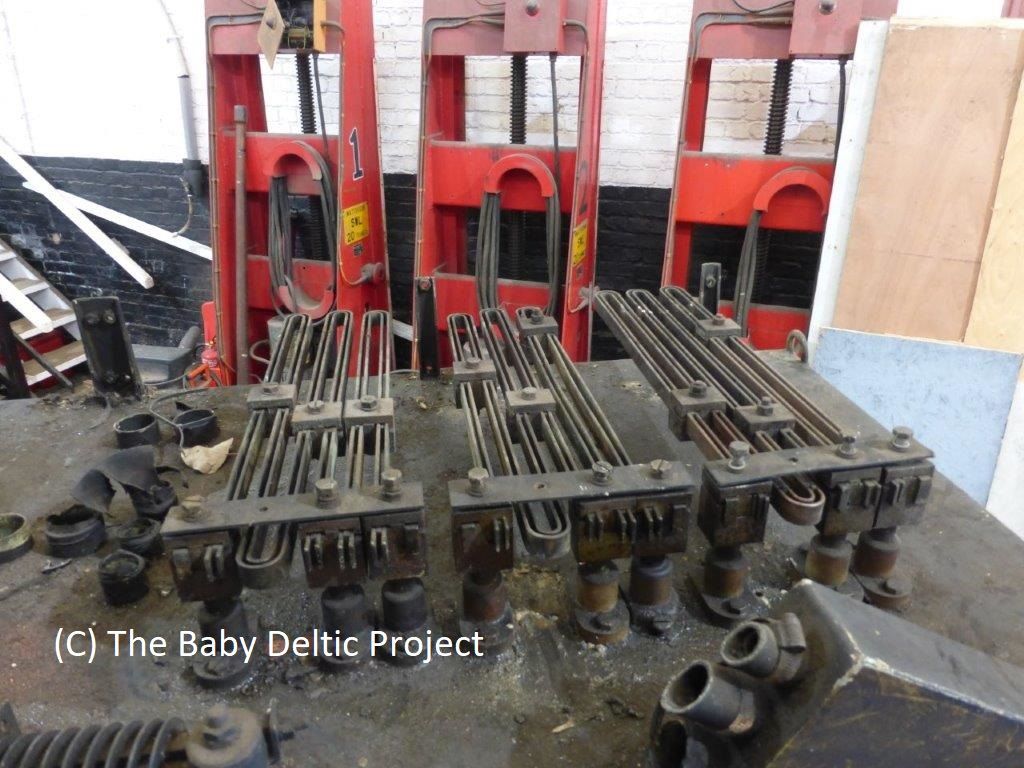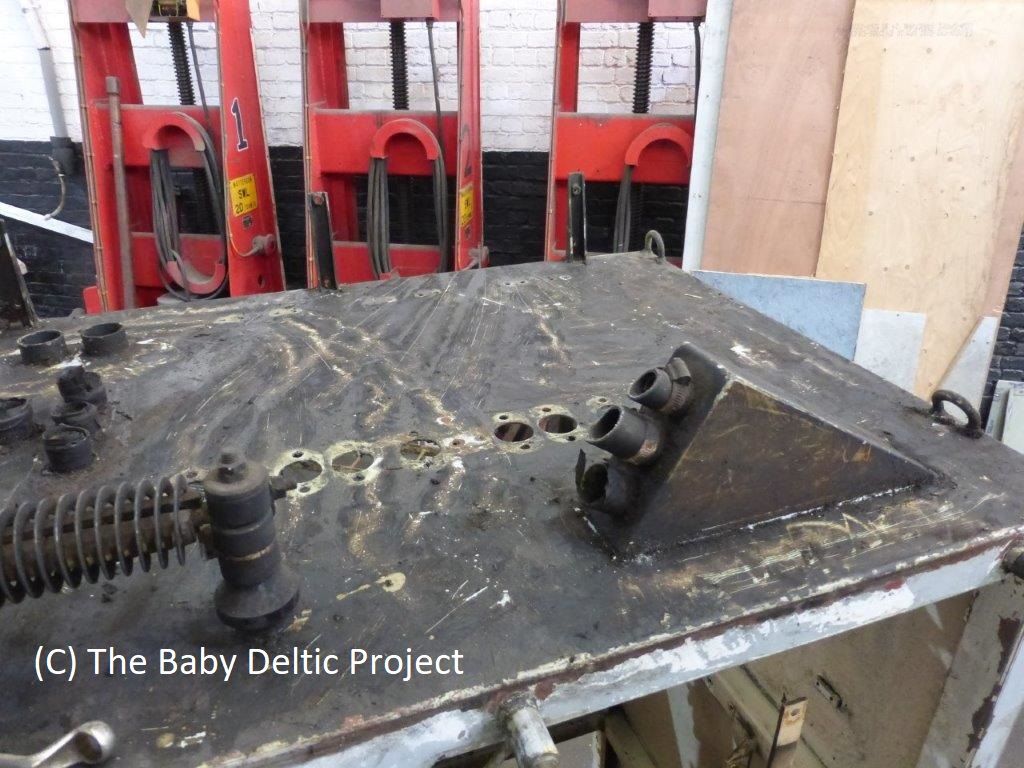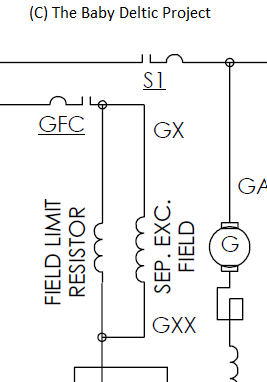News, 31 March 2023
News, 31 March 2023
As mentioned last week, the corner valances were lined up and tacked on and this week they've been fully welded.
These have been a challenge to get right, there are no drawings and no other loco to copy. Working from photographs (the newest of which is fifty years' old) we have had to draw them up, cut templates to prove the shape, laser cut a thin gauge section to prove it properly, laser cut full thickness sections and roll them. They're heavy, the edges are sharp and they're awkward to hold in position using a myriad clamps. Once they've been painted they'll look like a continuation of the panels above and around and that's the point - hours of work and no-one will notice!

Another one of those things which no-one will see. This is the top of the control cubicle, the large strips are the Field Divert Resistors, most of which won't be needed on the recreated loco. Field diversion is a method used to extend the speed / tractive effort range of a DC motor. When the loco accelerates so do the Traction Motors, as the speed increases the motor starts to act as a generator and produces a voltage in opposition to that of the generator, this reduces the power which can be consumed and the loco acceleration tails off. To counteract this the Traction Motor field strength is reduced by 'diverting' some of the generator voltage through a resistor in parallel with the field. This reduced field strength reduces the tendency of the motor to act as a generator and allows acceleration to continue. Reducing the field strength also reduces the torque generated by the Traction Motor which is why you can't start from standstill in weak field.
I realise that some locos used to start from standstill with some motors in WF, but this was to counteract appalling dynamic weight transfer and reduce wheelslip, don't write in......

After the removal of the divert resistors the dirt can be seen. The holes in the top of the cubicle are exit / entry points for generator cabling (left) and control cabling to the engine (right). Most of the cables exit through the bottom of the cubicle directly into conduit.
The remaining resistor at the bottom of the photo is the Main Generator Field Limit Resistor.

In the second of two 'Basic Electrical' lessons for today, the Main Gen. Field Limit Resistor is shown below in the extract from the loco control schematic drawing.
The output of the Main Generator is controlled by two variables; rotational speed and field strength. The speed varies according to engine speed and the field strength varies according to a response by the Engine Governor to Driver demand. In a loco of this age the Driver sets the demand according to the position of the power handle in the cab, the governor responds by raising (or lowering) the engine speed to match the Driver demand. At the set speed the load control part of the Engine Governor takes over and increases (or decreases) the Main Generator field strength so that the generator is giving its maximum possible output for whatever speed it's running at.
This is controlled by the Load Regulator which varies the Sep(aratly) Exc(ited) Field strength. High field strength = high output voltage and high power.
And so to the point.....the Field Limit Resistor is always in circuit for as long as GFC (Generator Field Contactor) is closed. (GFC closes to complete the circuit to allow the generator to work and to allow the loco to move). Any condition (whether by Driver demand, or fault) which requires the power to be removed will result in GFC opening, because the generator fields are large and heavily inductive any residual voltage in the fields would have nowhere to dissipate and you could end up with a large voltage looking for an escape route - usually to earth. This is highly undesirable so the resistor provides a path for the voltage to 'freewheel' away and dissipate safely as heat. It also prevents the field from being fully saturated by limiting the voltage applied at 'full field'. This doesn't matter so much with this loco because we're having an electronic load regulator but hey ho.
Yes, I am bored today.
Have a nice weekend.

